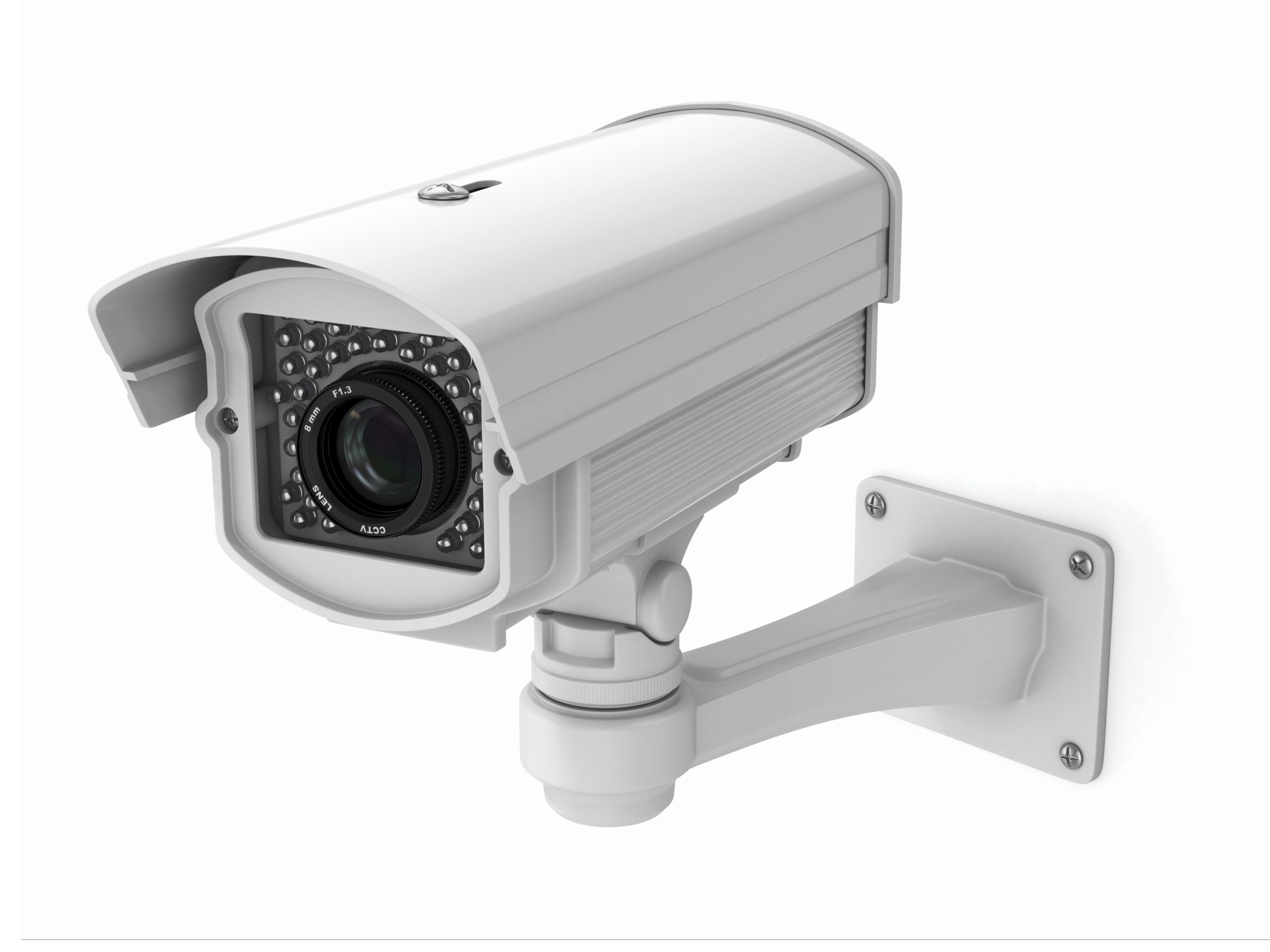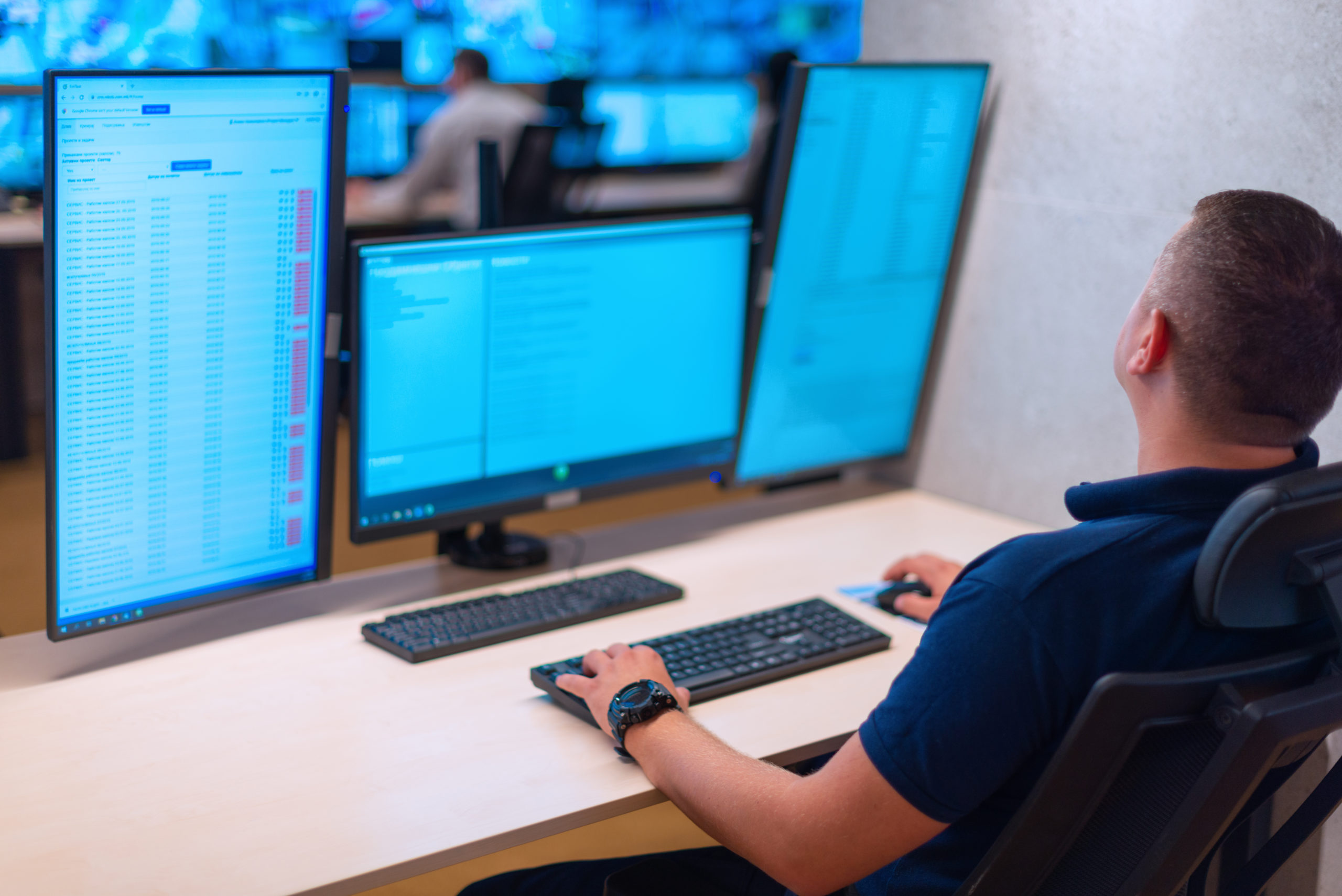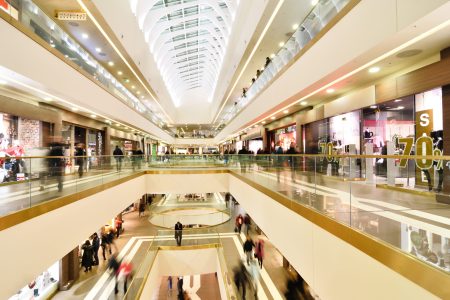How can using video surveillance help transform the retail experience and improve security, efficiency and reduce criminal activity
The retail industry has been through one of the most challenging periods in its history but is showing some positive signs of recovery. As restrictions have eased and allowed customers to return to shops, retailers have realised that there have been shifts in shoppers’ mentalities.
For example, in June 2021 PwC conducted a Global Consumer Insight Pulse Survey which found that 35% of consumers believed increased health and safety measures such as controlled numbers were important when shopping in physical stores.
“Surveillance technology can be implemented in a multitude of ways to help retailers remain responsive to changing demands”
In addition to health concerns, there is a demand for more flexible and convenient options. Consumers increasingly want a shopping experience that is as simple, quick and, above all, as contactless as possible. In order for brick-and-mortar retail to continue to survive, it must respond to the new needs of consumers.
Surveillance technology can be implemented in a multitude of ways to help retailers remain responsive to changing demands, supporting them in both improving the customer experience and store security. Louise Hobroh, Global Enterprise Segment Marketing Manager Retail and Carina Reitz, Solution Marketing Manager Network Audio for Axis Communications discuss exclusively for Security Buyer the benefits of video surveillance in the changing retail landscape.
Monitoring store occupancy
Surveillance solutions equipped with people counting and queue monitoring technology can be used to provide valuable information about activity within the store at any one time. The use of IP audio in these solutions can be used to both reassure shoppers of the safety measures in place and assist in controlling customer occupancy so there are not too many people in the store at the same time.
If the store becomes crowded or a long queue starts to develop, two actions can be taken. When shoppers are wishing to enter the store, voice messages can be used to instruct them that they need to wait due to reaching customer capacity. Meanwhile inside the shop, staff can be alerted to open more tills, reducing the number of people queuing at a single checkout station.
“Surveillance solutions equipped with people counting and queue monitoring technology can be used to provide valuable information”
This is also in line with customer wishes: A recent study by Multiscope shows that over a third of the surveyed participants (39%) would like to know how many people are in a shop before they enter it. This is likely another impact of the pandemic on shoppers’ mentalities where-by they feel overcrowded spaces pose more health risks. Audio solutions can also help to disperse crowds and shorten queues through live messages alerting staff to attend the shop floor so that they can intervene.
Deterring criminal activity inside and outside stores
Improving the customer experience is not only about monitoring for customer needs, but also for criminal behaviour.
Stores tend to be hot spots for theft, vandalism or interpersonal conflict and it is critical for security personnel to be aware of incidents. Early intervention is even more valuable, as staff can prevent incidents from escalating. Surveillance solutions with features such as sound detection can support staff in detecting undesirable activity. For example, audio analytics can be used to pick up sounds of aggression from individuals or breaking glass. After the detection of the sounds, alerts can be used in various ways to respond to the situation for example: to notify an alarm centre that can speak live to the scene and instruct security staff to the site; or enable the speaker to play a pre-recorded message that they are under surveillance and that security staff are on their way.
In the self-checkout zone, video helps to prevent shrinkage. Software analyses goods in a customer’s shopping trolley based on the video image and ensures that the products are scanned correctly. By connecting this to audio capabilities, alerts can be triggered to identify non-scanning and fraud and then instruct staff to come over and check the items when necessary. Integrating voice messages into self-checkout zones can discourage criminal activity by informing individuals how to scan correctly.

Losses from shoplifting can be significant – it’s been reported that European retailers lose roughly €49bn a year from shrinkage. Audio solutions can support in deterring theft inside shops by playing announcements and alerts when suspicious behaviour is detected by video cameras. For example, if a visitor lingers in a high value goods area for a long time, a voice message saying that staff will be there to support can be played. Through these actions suspicious behaviour can be addressed, ultimately leading to fewer incidents and a reduction in security personnel needed on site, saving money and time.
Use of video cameras and audio solutions was implemented by RC Willey, a large home furnishings chain in the US. After deploying cameras in stores and warehouse to track inventory and spot discrepancies the stores experienced a reduction in shrinkage. In an effort to increase profits even more, the retailer added audio speakers to the security solution, to play pre-recorded messages to intruders or vandals when they were detected by cameras. As a result of the combined implementation, RC Willey found that theft and vandalism expenses dropped from $40-$50K a year to zero at its Las Vegas distribution centre, even though the location was a hot spot for criminal activity.
Combining these smart technologies for monitoring criminal behaviour can impact not only inside stores, but the surrounding areas outside. If there are people loitering or gathering after opening hours, alerts can be sent to security teams and messages played to encourage groups or individuals to move on. Actions can then be taken to address suspicious behaviour.
In practice, this works well. Le Piazze Center in Bologna needed to upgrade the existing surveillance system to improve efficiencies and better support security staff. By adding network audio to the solution, a passive system was transformed into a proactive instrument which could broadcast either live or pre-recorded messages. In this way, undesirable events and emergency situations were better prevented and managed. It also led to significant cost-savings, both through a reduced number of false alarms and the elimination of physical on-site patrols.
Improving the In-store experience
Audio capabilities can impact the customer experience as soon as they enter the store.
An IP audio system can for instance welcome customers via a triggered voice message in the entrance and play music at different sound levels in various zones creating a calming and welcoming atmosphere that encourages shoppers to browse and linger. In addition, announcements can help ensure compliance with hygiene regulations as well as for general information and commercial promotions that can be scheduled.
“Using technology has become an important aspect of ensuring safety and security.”
Following the difficulties associated with lockdown restrictions, Sweden’s first unmanned confectionary store, Crazy Candy needed to extend opening hours and reduce staff numbers and costs while also keeping customers safe and secure. With a move to unmanned operations in mind, the retailer implemented a solution with cameras access control and audio which helped monitor customer entry and movements around the store, while using network audio to create the right atmosphere and play alerts and relevant instructions. As a result, Crazy Candy was able to safely extend store opening hours, improve customer experience and increase sales.
Smart technology is key
With fewer people overseeing what is happening on the shop floor and in other areas of the retail environment, using technology has become an important aspect of ensuring safety and security.
Adding audio to the surveillance system and using voice messages to protect property keeps people safe and efficiently communicates instructions, guidance and reminders that relieve staff resources. They enable surveillance systems to act on what they see and stop incidents before they happen automatically and remotely.
Live voice messages can be used in targeted zones speaking to the scene when necessary to deter unwanted behaviour. This gives retail security teams a much greater ability to control their environment, using fewer staff, with simple set-up and ease of operation that comes from t

he IP audio system and video surveillance system sharing the same network.
It’s clear that intelligent surveillance technology is beneficial to creating a more compelling customer experience which, in turn, can only increase revenue.
Carina Reitz, Solution Marketing Manager Network Audio for Axis Communications
Surveillance technology can be implemented in a multitude of ways to help retailers remain responsive to changing demands, supporting them in both improving the customer experience and store security.
Surveillance solutions equipped with people counting and queue monitoring technology can be used to provide valuable information about activity within the store at any one time. The use of IP audio in these solutions can be used to both reassure shoppers of the safety measures in place and assist in controlling customer occupancy so there are not too many people in the store at the same time.

If the store becomes crowded or a long queue starts to develop, two actions can be taken. When shoppers are wishing to enter the store, voice messages can be used to instruct them that they need to wait due to reaching customer capacity. Meanwhile inside the shop, staff can be alerted to open more tills, reducing the number of people queuing at a single checkout station.
This is also in line with customer wishes: A recent study by Multiscope shows that over a third of the surveyed participants (39%) would like to know how many people are in a shop before they enter it. This is likely another impact of the pandemic on shoppers’ mentalities where-by they feel overcrowded spaces pose more health risks. Audio solutions can also help to disperse crowds and shorten queues through live messages alerting staff to attend the shop floor so that they can intervene.
Vegard Aas, Head of Online Business at Ava Security
A new retail sector study of 111 high street retailers based in the UK, US, Sweden and Norway, that we carried out in March 2021 has revealed some interesting statistics when it comes to security in the retail environment.
The research revealed that the biggest loss prevention gains from use of video monitoring in stores were in shoplifting where 58% of retail sector security decision-makers recorded significant reductions in losses from shoplifting as a result of video security and 9% went further to reveal that their video security systems had completely eliminated shoplifting.

Retailers, which have been enthusiastic adopters of video security to reduce well-known shrinkage sources and deliver increased operational efficiencies through remote monitoring for example, are now upgrading these systems by adding new video analytics to reduce losses further and promote COVID Safety in stores.
We are also seeing a strong interest from this sector for moving video security systems into the cloud. It makes sense because many retailers have multiple shops which their managers monitor remotely using the in-store cameras.
Moving video recording and management into the cloud using a VSaaS system could help ensure more efficient access and storage of key video sequences and cut capital expenditure as dedicated PCs running VMSs locally should no longer be needed in each shop in a VSaaS scenario. There are significant savings to be had and efficiencies to be derived if cloud migrations are managed correctly.
Louise Hobroh, Global Enterprise Segment Marketing Manager Retail, Axis Communications
Stores tend to be hot spots for theft, vandalism or interpersonal conflict and it is critical for security personnel to be aware of incidents. Early intervention is even more valuable, as staff can prevent incidents from escalating. Surveillance solutions with features such as sound detection can support staff in detecting undesirable activity. For example, audio analytics can be used to pick up sounds of aggression from individuals or breaking glass. After the detection of the sounds, alerts can be used in various ways to respond to the situation for example: to notify an alarm centre that can speak live to the scene and instruct security staff to the site; or enable the speaker to play a pre-recorded message that they are under surveillance and that security staff are on their way.

In the self-checkout zone, video helps to prevent shrinkage. Software analyses goods in a customer’s shopping trolley based on the video image and ensures that the products are scanned correctly. By connecting this to audio capabilities, alerts can be triggered to identify non-scanning and fraud and then instruct staff to come over and check the items when necessary. Integrating voice messages into self-checkout zones can discourage criminal activity by informing individuals how to scan correctly.
Use of video cameras and audio solutions was implemented by RC Willey, a large home furnishings chain in the US. After deploying cameras in stores and warehouse to track inventory and spot discrepancies the stores experienced a reduction in shrinkage. In an effort to increase profits even more, the retailer added audio speakers to the security solution, to play pre-recorded messages to intruders or vandals when they were detected by cameras. As a result of the combined implementation, RC Willey found that theft and vandalism expenses dropped from $40-$50K a year to zero at its Las Vegas distribution centre, even though the location was a hot spot for criminal activity.
Media contact
Rebecca Morpeth Spayne,
Editor, Security Portfolio
Tel: +44 (0) 1622 823 920
Email: editor@securitymiddleeast.com













